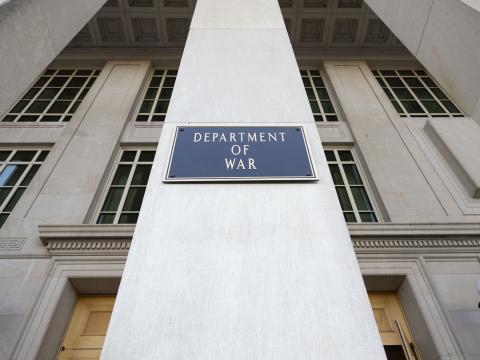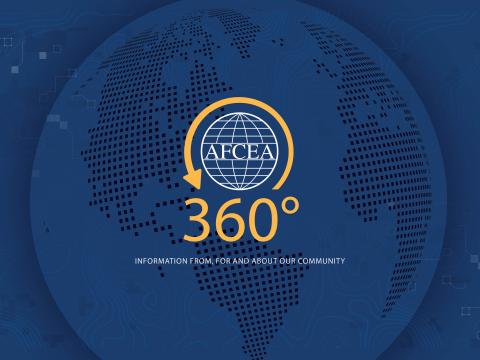President's Commentary: It's Not Top Secret That Intelligence Needs More Resources
New threats are emerging constantly, old threats are becoming more serious, and capabilities menacing national security are increasingly innovative.
The challenges facing the intelligence community (IC) have never been greater in both degree and diversity. New threats are emerging constantly, old threats are becoming more serious, and capabilities menacing national security are increasingly innovative. The greatest impediment to addressing these dynamic challenges may be internal rather than external: insufficient resources.
The IC’s core was developed during the Cold War, when the United States and its allies faced the persistent threat posed by the Soviet Union and its surrogates. That monolithic menace faded in the 1990s. It was initially replaced in the new millennium by terrorism, which itself has expanded and diversified across national and tribal boundaries. Meanwhile, rogue nations such as Iran and North Korea have become increasingly adept and emboldened. They are honing their capabilities to test U.S. forces regionally and globally. Russia and China have rallied and become near-peer competitors, presenting a significant challenge to U.S. interests.
The luxury of being able to focus on a monolithic threat faded long ago. Today the IC must confront a threat picture that is more dynamic, complicated and broader than ever. This complexity is exacerbated by rapid advances in technology, which is empowering adversaries to an unprecedented degree.
Communications has shrunk the globe to the point where information in multiple media and formats moves thousands of miles at the speed of light. Disinformation and misinformation have become rampant, and various types of media enable their delivery across the technology spectrum. Information warfare is re-emerging as an old idea with some new capabilities. This communications boom has led to a change in roles among the news media, which has become less objective. Each of these factors has influenced the message and tone of the picture that people see of each other’s lives. In some ways, these factors have contributed to mass migrations across formerly daunting distances and geography.
Technologies are providing new capabilities to adversaries. Commercial advances in areas as far-reaching as space are now available to consumers in the private sector—as well as to terrorists and rogue nations. The best and brightest in the research arena used to be found among federal laboratories, but today many of them are working for global corporations. The government cannot match the opportunities and incentives these corporations offer. What once was proprietary U.S. government research and technology has become a global commodity, geospatial data proves. Artificial intelligence, robotics, autonomous systems, cyber, the Internet of Things and cloud computing are all technologies that adversaries can play to their advantage. Our traditional technological advantage is shrinking.
Addressing these challenges will require a multifaceted approach underpinned by a vision informed by rapidly changing technology. This will require a strategic view as well as a tactical one.
The IC must determine how it will organize to meet emerging threats in the present and in the often-cloudy future. Overlapping capabilities need to be examined against effectiveness and efficiency, potentially freeing up resources for reinvestment. The community must address the challenge of an inadequate acquisition system, a system that obtains capabilities consistently characterized as “late to market.” The community also must receive more resources to help develop the work force and additional capabilities to cover the increasingly multifaceted and expanding threat.
One area of need is in multidimensional space operations, which are rising to the fore across a broad international base. Is the intelligence community prepared to provide leaders with the necessary space intelligence understanding to meet our national security requirements? The community has used space as a domain for collection for decades. Now it must provide an improved, tailored product about that realm, including commercial space.
Cyber continues to grow in importance. It is far-reaching, it is expanding dramatically, and its capabilities are being exploited by good and bad actors. The diverse domain is used not only for collecting intelligence but also for monitoring, analyzing and weaponizing, if necessary. Improved intelligence in this domain is a critical imperative.
Any area that is a target for intelligence also needs a strong counterintelligence element. Even artificial intelligence (AI), which we will rely on for data analysis in the future, must be subject to scrutiny. A small piece of embedded malware or corrupt software could change the data an AI system presents to a customer and generate a misleading conclusion.
Simply funding the intelligence community along traditional lines no longer will be sufficient. Efforts must focus on acquiring the right capabilities, addressing personnel challenges and training the community effectively to exploit new ways of collecting, analyzing and distributing information from different target sets. Given a finite budget and an increasing target set, the intelligence community must prioritize its focus and capability needs. The question underlying all these challenges is whether the community is properly postured to meet the next national security challenge—and beyond.




Comment
President's Commentary
This letter could have been written in 1975 when I joined the Intelligence community, in 2006 when I left the community and again today in 2017. The challenges are formidable. The solutions are in people, not the technology - although tech certainly helps. People have made the difference, make the difference and will always make the difference. Treat them better for better results. The major IC agencies have significant leadership challenges. Address them and things will improve.
Comments